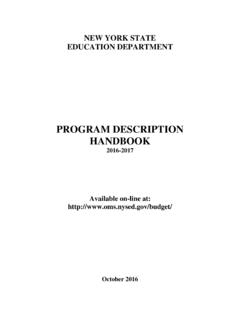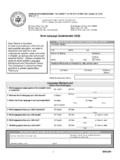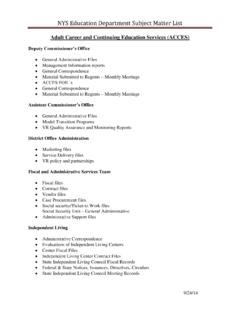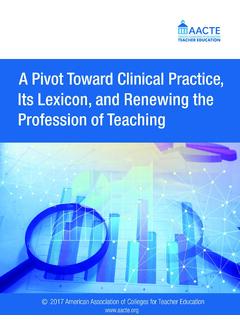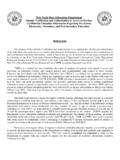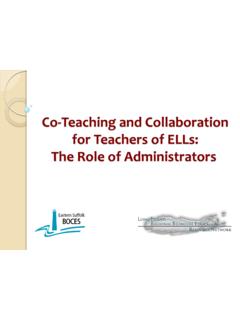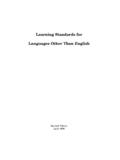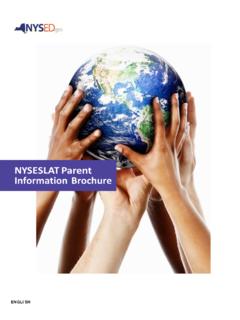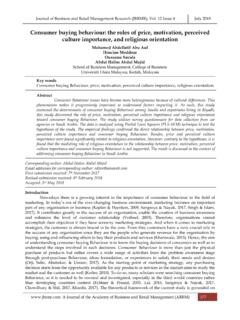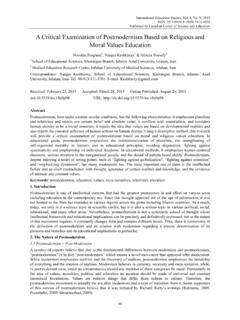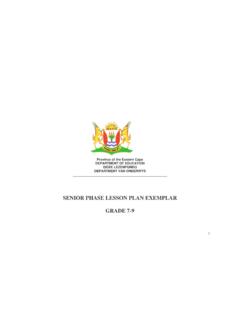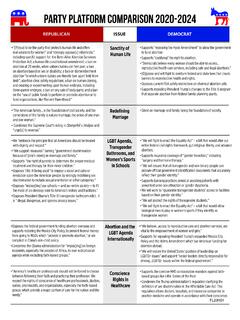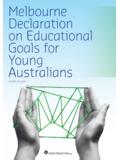Transcription of Learning Standards for Social Studies
1 Learning Standards for Social Studies Revised Edition June 1996 THE UNIVERSITY OF THE STATE OF NEW YORK Regents of The University Carl T. Hayden, Chancellor, , .. Elmira Louise P. Matteoni, Vice Chancellor, , , .. Bayside Jorge L. Batista, , .. Bronx J. Edward Meyer, , .. Chappaqua R. Carlos Carballada, Chancellor Emeritus, .. Rochester Norma Gluck, , .. New York Adelaide L. Sanford, , , .. Hollis Walter Cooper, , .. Rochester Diane O Neill McGivern, , , .. Staten Island Saul B. Cohen, , , Ph. D.. New Rochelle James C. Dawson, , , , .. Peru Robert M. Bennett, , .. Tonawanda Robert M. Johnson, , .. Lloyd Harbor Peter M. Pryor.
2 Albany Anthony S. Bottar, , .. Syracuse Merryl H. Tisch, , ..New York President of The University and Commissioner of Education RICHARD P. MILLS Executive Deputy Commissioner of Education THOMAS E. SHELDON Deputy Commissioner for Elementary, Middle, Secondary, and Continuing Education JAMES A. KADAMUS Assistant Commissioner for Curriculum, Instruction, Assessment, and Innovation EDWARD T. LALOR Coordinator of Curriculum and Instruction ROSEANNE DEFABIO The State Education Department does not discriminate on the basis of age, color, religion, creed, disability, marital status, veteran status, national origin, race, gender or sexual orientation in its educational programs, services and activities.
3 Portions of this publication can be made available in a variety of formats, including braille, large print or audio tape, upon request. Inquiries concerning this policy of nondiscrimination should be directed to the Department s Office for Diversity, Ethics, and Access, Room 152, Education Building, Albany, NY 12234. CONTENTS Acknowledgments iv Introduction SAMPLES OF STUDENT WORK RELATED TO THE Standards 31 vi Learning Standards FOR Social Studies 1 iii Acknowledgments Many contributors to this document are recognized in the Preliminary Draft Framework for Social Studies . We are also grateful to the many teachers from throughout New York State who contributed performance tasks and sam ples of student work for possible inclusion in this revised edition.
4 Listed below are the names of those educators who submitted or reviewed the materials that appear in this document. Contributors Peter Abbey JHS 240, Brooklyn Paul Bachorz Niskayuna High School, Schenectady John-Paul Bianchi Community School District #8, The Bronx Jean Blakley Honeoye Falls-Lima School District Marna Burstein Buffalo Public School #82 Barbara Carson-Jones Buffalo Traditional School Robert Clark Honeoye Falls-Lima School District Carletta Corron Beekmantown Central School District, Plattsburgh Edward Crotty Niskayuna High School, Schenectady Doreen Dell Williamsville Central School District Mary Eads Niskayuna High School, Schenectady William Fetsko Liverpool Central School District Ann Fronckowiak Buffalo Public Schools Linda Fusco Williamsville Central School District Walter Gable Seneca Falls Central School District Donald Gee Seneca Falls Central School District Anthony Gero Auburn High School Steven Goldberg New Rochelle City School District Alice Grant Pelham Union Free School District Thomas Henry Liverpool Central School District Benita Jorkasky SUNY Brockport Tamara Lipke West Irondequoit High School, Rochester Ruth H.
5 Mowry Beekmantown Central School District, Plattsburgh William Neer Soule Road Middle School, Liverpool Linda C. Neri Lafayette High School, Buffalo Theresa C. Noonan West Irondequoit High School, Rochester Jane Orofino Auburn High School Tamara Pozantides Buffalo Bilingual Early Childhood Center #36 Michael Romano Northport School District Diane Rosen JHS 240, Brooklyn Arlene Simon Pelham Union Free School District Sharon Sobierajski Buffalo Public School #53 Jeffrey H. Trout Seneca Falls Central School District Gary VanCour Beekmantown Central School District, Plattsburgh David Wetzel Niskayuna High School, Schenectady Gregory Wilsey Law, Youth, and Citizenship Program Jeanette Zaloom New Rochelle City School District iv Acknowledgments State Education Department Norman Abramowitz Annette Argyros Jan Christman Major Capers Roseanne DeFabio George Gregory Beverly Ivey Barry Jamason Barbara Kelly Edward Lalor JoAnn Larson Gary Warren v Learning Standards for Social Studies at Three Levels Standard 1.
6 History of the United States and New York Students will use a variety of intellectual skills to demonstrate their understanding of major ideas, eras, themes, developments, and turning points in the history of the United States and New York. Standard 2: World History Students will use a variety of intellectual skills to demonstrate their understanding of major ideas, eras, themes, developments, and turning points in world history and examine the broad sweep of his tory from a variety of perspectives. Standard 3: Geography Students will use a variety of intellectual skills to demonstrate their understanding of the geography of the interdependent world in which we live local, national, and global including the distribution of people, places, and environments over the Earth s surface.
7 Standard 4: Economics Students will use a variety of intellectual skills to demonstrate their understanding of how the United States and other societies develop economic systems and associated institutions to allocate scarce resources, how major decision-making units function in the United States and other national economies, and how an economy solves the scarcity problem through market and nonmarket mechanisms. Standard 5: Civics, Citizenship, and Government Students will use a variety of intellectual skills to demonstrate their understanding of the necessity for establishing governments; the governmental system of the United States and other nations; the United States Constitution; the basic civic values of American constitutional democracy; and the roles, rights, and responsibilities of citizenship, including avenues of participation.
8 1 Standard 1 History of the United Statesand New York Elementary 1. The study of New York State and United States history requires an analysis of the development of American culture, its diversity and multicultural context, and the ways people are unified by many values, practices, and traditions. Students: know the roots of American culture, its development from many different traditions, and the ways many people from a variety of groups and backgrounds played a role in creating it understand the basic ideals of American democracy as explained in the Declaration of Independence and the Constitution and other important documents explain those values, practices, and traditions that unite all Americans.
9 This is evident, for example, when students: read stories about the early days of American society and discuss the way of life of those times discuss how basic ideals of American democracy are shown in such speeches as Lincoln s Gettysburg Address and Martin Luther King s I Have a Dream speech explain ways that families long ago expressed and transmitted their beliefs and values through oral traditions, literature, songs, art, religion, community celebrations, mementos, food, and language (Taken from National Standards for History for Grades K-4) compare the characters and events described in historical fiction with primary sources such as historic sites themselves; artifacts of the time found in museums and at state historic sites; journals, diaries, and photographs of the historical figures in stories; and news articles and other records from the period in order to judge the historical accuracy and determine the variety of perspectives included in the story.
10 (Adapted from National Standards for History for Grades K-4). 2. Important ideas, Social and cultural values, beliefs, and traditions from New York State and United States history illustrate the connections and interactions of people and events across time and from a variety of perspectives. Students: gather and organize information about the traditions transmitted by various groups living in their neighborhood and community recognize how traditions and practices were passed from one generation to the next distinguish between near and distant past and interpret simple timelines. This is evident, for example, when students: conduct interviews with family members, collect family memorabilia such as letters, diaries, stories, photographs, and keepsakes; classify information by type of activity: Social , political, economic, cultural, or religious; discuss how traditions and practices were passed from one generation to the next; determine the extent to which the traditions and practices are shared by other members of the class study the history and traditions of their neighborhoods and local communities.
